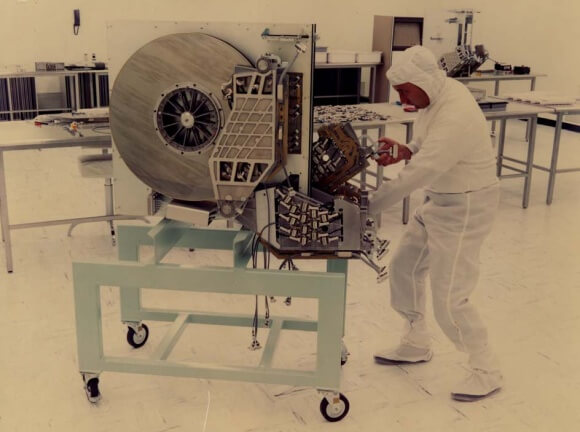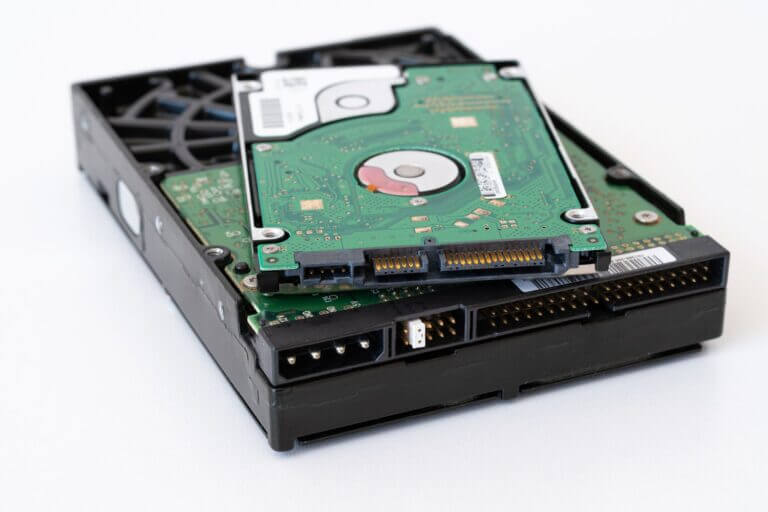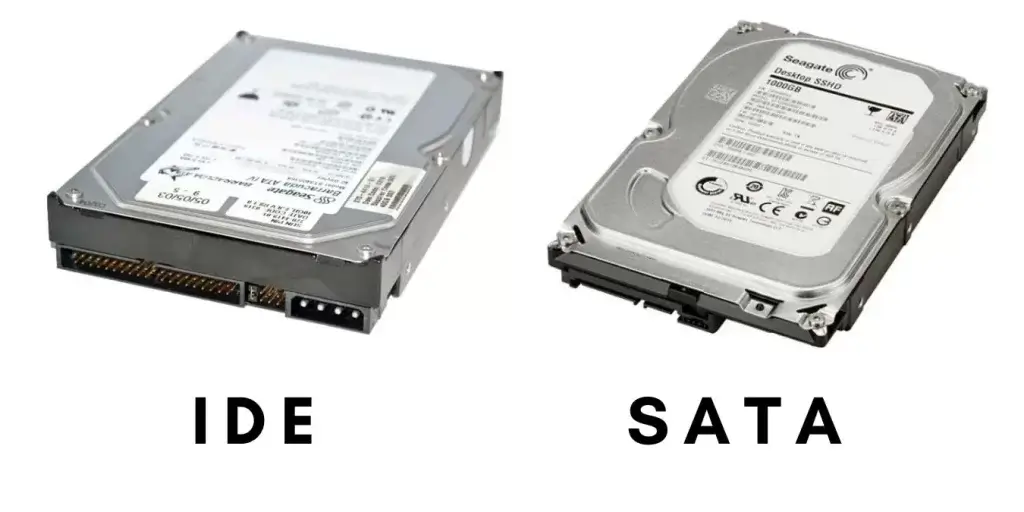Hard drives are essential in computers, its not like we can use floppy disks or cassette tapes like we did in the 1980s. Hard drive technology has changed over the years and a lot of the older drives don’t talk well with new technology, so let’s dive in…

History
Hard drive technology dates back to 1957, with 3.57 megabyte drives and costing around $97,000 per megabyte on 24″ platters and got the nickname of washing machines because of their immense size.
The 1980s were the whirlwind of technology with the 8″ drives in early 1980 replaced by 5.25″ drives in late 1980, 3.5″ was introduced in 1983 and 2.5″ introduced in 1988.
The 1990s brought in more standardised drive technology, with MFM, RLL, SCSI and IDE being introduced in this era.
The 2000s brought in larger drive sizes and the move away from parallel drive communication to faster serial technology like SAS and SATA.
The 2010s were the introduction of the drives with the entire capacity of drives on a single platter. Additionally, the move away from spinning hard drives to Solid State Drives became a thing.
Hard drives are still used in industry for large capacity storage, but most new computers come with solid state drives.

Slow computer
One of the biggest problems with hard drives is that they wear out over time, and the operating system doesn’t tell you there is a problem reading or writing to the drive but you start seeing your computer running slower and slower.
SMART (Self-Monitoring Analysis and Reporting Technology) was supposed to alert the user that the drive is failing but it tends not to inform the use until it is too late, as the computer doesn’t often alert the user that there is a problem until the drive fails the test on boot.
Solid State Drives don’t work the same way as spinning hard drives but they tend to drop dead instead of failing over time.
It is obvious that backups are an important thing to prevent data loss. I will cover this in a blog post in the near future.
Drive cloning
It is possible to make a complete copy of a drive known as “cloning” which takes a block based copy between one drive to another. In most cases, the cloning works when the destination drive is the same size or larger than the source drive, but it is possible to clone to a smaller drive by reducing the source drive’s partition and then copy the data.
This is something for healthy drives but not for failing drives.
Recovery and forensics
Drive recovery can take a number of forms, from recovering deleted data to recovering data by removing the platters in a clean room environment.
Forensics is a similar field to recovery, the data is extracted from the drive in a read only environment without making any changes or evidence that the user has read the drive.
Encryption
There are two kinds of encryption that can be applied to hard drives, the first is hardware based if the drive supports it. The drive has a token that is used as a pass phrase to encrypt the data on the drive. A drive can easily be erased and rendered unrecoverable if the token is deleted or changed so the drive can be reused straight away and the data is safe from someone attempting to recover data in the future.
Software based encryption such as BitLocker use an external code to encrypt and decrypt data on the hard drive, with that code stored in the Microsoft account and in the TPM (Trusted Program Module) so they computer can start without needing the code. However, recently hackers have found ways to attack the TPM chip while the computer is running and download the code that encrypts the drive to unlock it. Additionally, Windows Home users have discovered their encrypted data can’t be recovered.
Replacing a drive

Desktop hard drives are the easiest to replace, although that depends on the manufacturer (Compaq/HP for instance uses hex bolts instead of phillips heads) so it is a simple case of disconnecting the old drive and undoing the screws and removing the drive to reverse the process with the new drive. Note that an IDE drive or SCSI drive will not work with a modern SATA drive.
You can replace a 3.5″ drive with a 2.5″ drive by using a bracket. You will find most SATA drives are in 2.5″ form factor.
Laptops tend to be more of a problem replacing drives, although earlier models had a door to get to the drive but others required the entire case to be removed.
2.5″ laptop drives don’t use the 12v power pin, so a laptop cannot power a 3.5″ hard drive.
Short cuts
On desktops, it is often possible to connect the new drive to the power and data connector for the DVD drive and use that to transfer the data scross to the new drive. This method is much faster than placing the old drive in an external enclosure.


